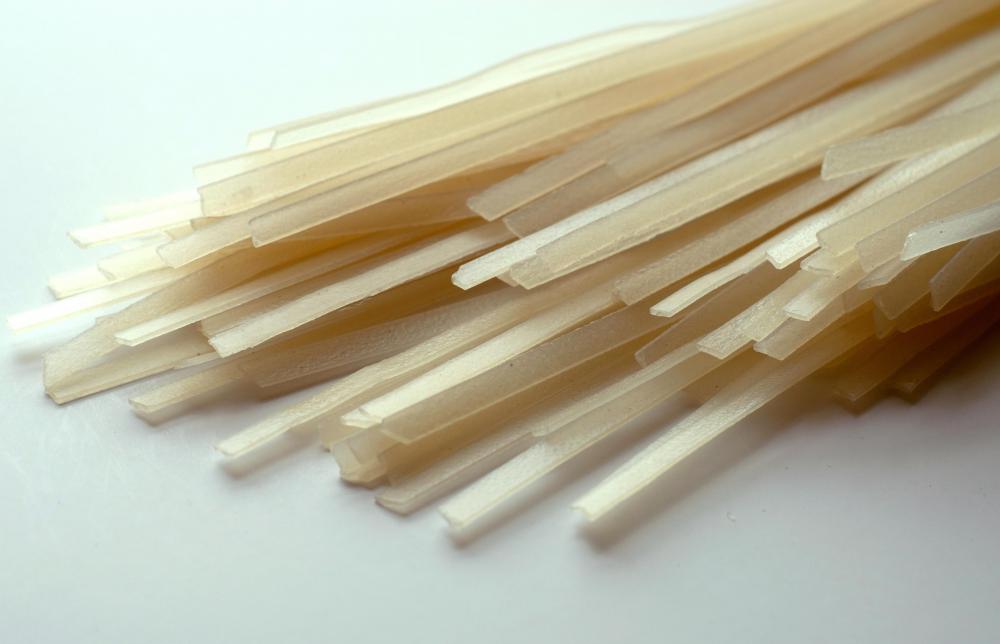At WiseGEEK, we're committed to delivering accurate, trustworthy information. Our expert-authored content is rigorously fact-checked and sourced from credible authorities. Discover how we uphold the highest standards in providing you with reliable knowledge.
What Are Gluten-Free Noodles?
Those with celiac disease as well as individuals with dietary sensitivities may find it necessary to adopt a gluten-free diet, or a diet which is free of wheat products. While these individuals may feel that their health has improved after embracing a gluten-free lifestyle, some may miss common foods which are typically made with wheat, such as noodles. With the many varieties of gluten-free noodles available, however, those avoiding wheat need not miss out on their favorite dishes. The most common types of gluten-free noodles can be broken into three categories: store-bought wheat noodle substitutes, homemade wheat noodle substitutes, and Asian noodles.
As public awareness of celiac disease and adoption of wheat-free diets became increasingly common in the late 20th century, food manufacturers took note, and many began to produce gluten-free noodles which are essentially wheat noodle substitutes. In other words, these products are made in common pasta shapes such as spaghetti, shells, and penne, and can be dressed with sauces or used in recipes just as wheat noodles are. These wheat-free noodles differ from traditional noodles in one significant way, however: they are made from flours which do not contain gluten, such as buckwheat flour, rice flour, or quinoa flour.

While these store-bought gluten-free noodles may be almost identical in appearance to traditional noodles, many complain that they lack taste and have an unpleasant consistency. Some gluten-free cooks suggest that the best wheat noodle substitutes are those which are made at home. Producing gluten-free noodles at home allows the cook to experiment with blending different types of flours until she has devised a mixture that produces noodles which resemble “the real thing” in appearance, taste, and texture. On the downside, home noodle making can be time consuming and messy, and generally requires specialized and potentially expensive equipment, such as a pasta machine.

The products which fall under the third category of gluten-free noodles, Asian noodles, are not made specifically to cater to those on gluten-free diets, and thus are not intended to mimic wheat noodles. Rather, most of these noodles, a common part of many Asian dishes, just happen to be made from gluten-free ingredients, such as rice flour and sweet potato starch. This category of gluten-free noodles possesses its own distinct tastes and textures, which are not meant to imitate those of wheat noodles. These noodles can be easily incorporated into many soups and stir-fries, although their flavors may not work well in Italian-style cuisine.
AS FEATURED ON:
AS FEATURED ON:














Discuss this Article
Post your comments